Years ago, a neighbor gave me a packet of spaghetti squash seeds. Since I still had plenty of room in my garden among the butternut squash and zucchini plants, I decided to plant several of the seeds. Later that summer, I found myself with a bumper crop of spaghetti squash. The irony was that I’d never prepared (or eaten) one in my life so I had some learning to do. After some trial and error, I finally settled on the perfect method for cooking this incredibly versatile and nutritious winter squash which can be a delicious low-carb stand-in for pasta in your favorite recipes or you can serve those tender, spaghetti-like strands as a simple side dish with extra virgin olive oil and herbs or toss them into a pizza-inspired dish that the whole family will love.
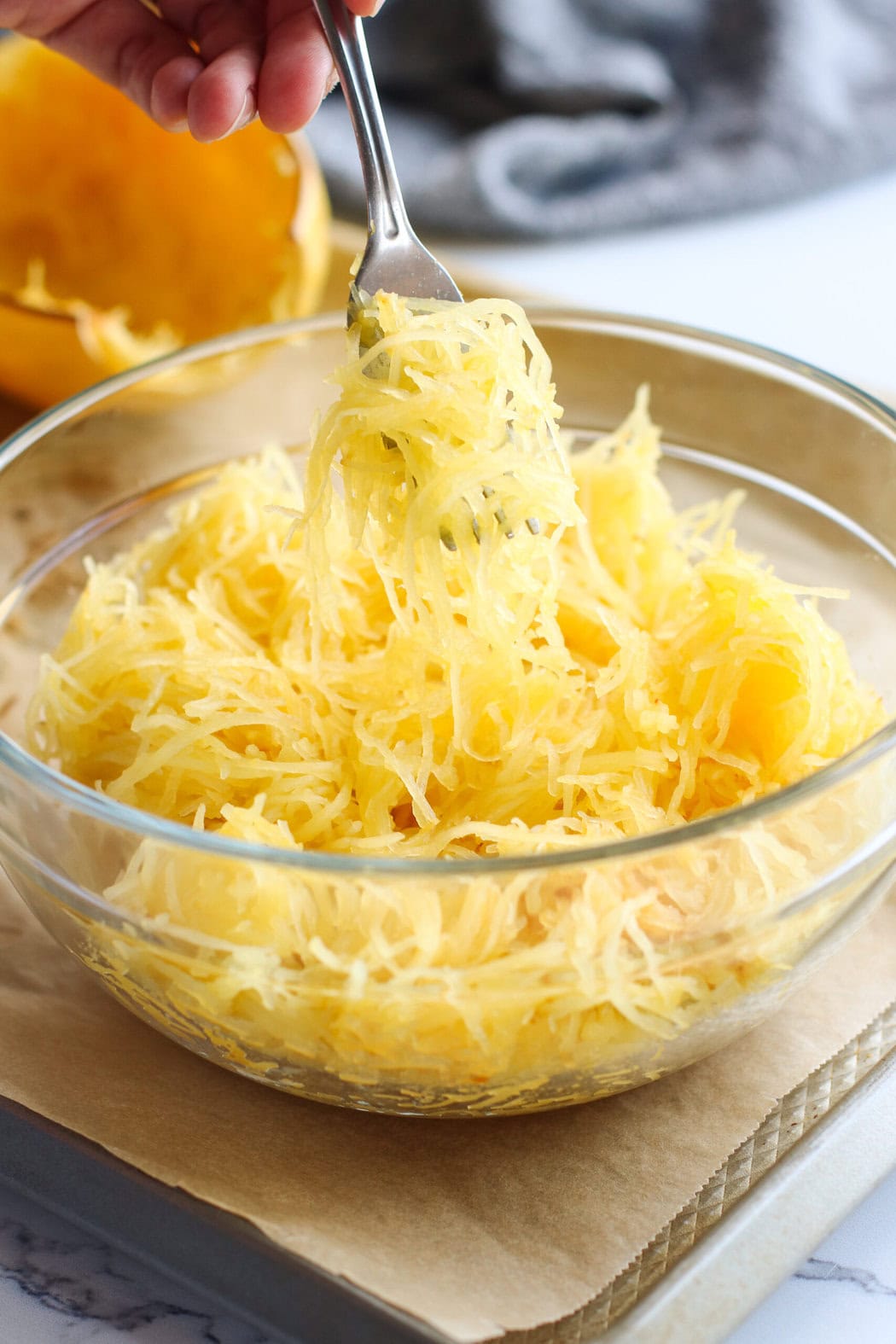
Recipe Highlights
Baking spaghetti squash in the oven is surprisingly easy to do and you get great results every time. You can also steam it in your Instant Pot but this is by far my favorite way to cook spaghetti squash because the edges get a bit caramelized and it’s less watery than when you use the steaming or boiling method. The hardest part is cutting the squash but I have some great tips below to help make that easier too.

Nutrition Spotlight
Spaghetti squash is naturally gluten-free and has a mild, nutty flavor that’s delicious on its own but it’s also delicious in this flavor-packed dish or topped with meatballs and your favorite marinara sauce. It has an impressive nutrition profile including being:
- A good source of fiber
- Low calorie
- Low carbohydrate
- A good source of pantothenic acid (a B vitamin)
- Rich in antioxidants such as beta carotene (a precursor to vitamin A) and vitamin C
- Saturated fat-free
- Naturally gluten-free
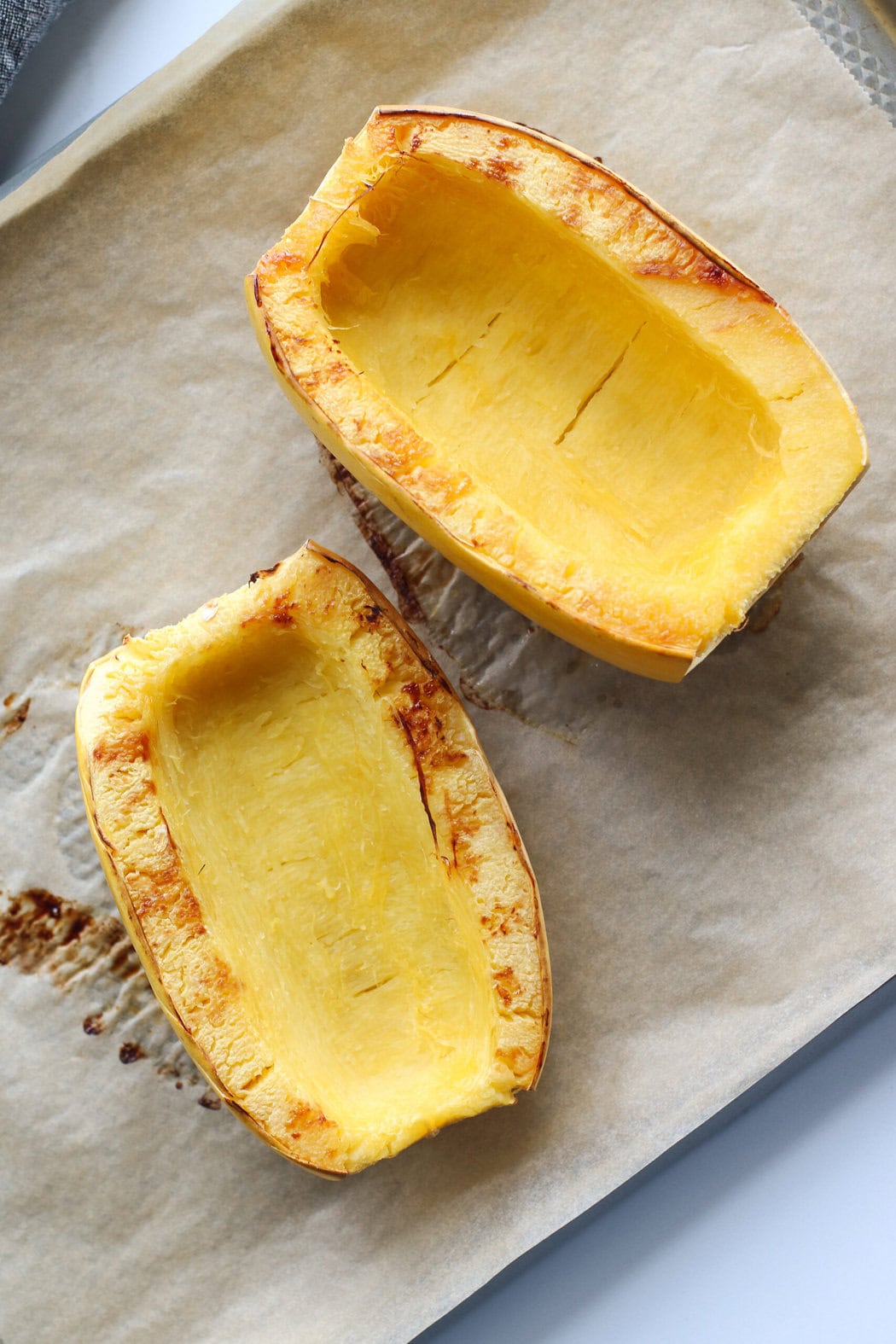
How To Make Cooked Spaghetti Squash
There are basically 3 ways to cook spaghetti squash: roast, steam or microwave. Today I’m sharing with you what I think is the best way to cook spaghetti squash, which is to roast the squash halves cut side down in the oven. This gives the edges a nice caramelized color which adds a bit of flavor.
Step 1 – Prepare the squash for cutting. Wash and dry the squash then slice off the top and bottom ends (the stem and blossom ends).
Step 2 – Cut the squash in half lengthwise. Position the squash upright on a cutting board on one of the cut ends then use a large chef’s knife to cut down the middle. Be sure to position your hand on top of the squash to hold it steady, being careful not to cut yourself.
This is best done with a sharp knife. You may need to place a folded dish towel between your hand and the end of the blade (where you’ll need to also apply some pressure) to help guide the knife downward through the flesh.
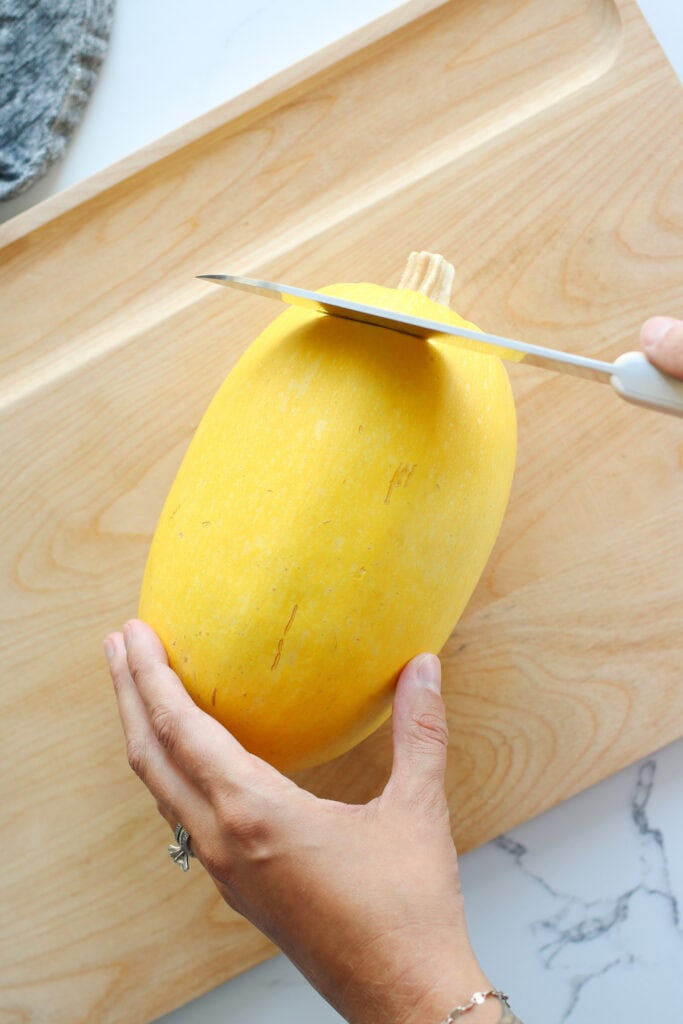
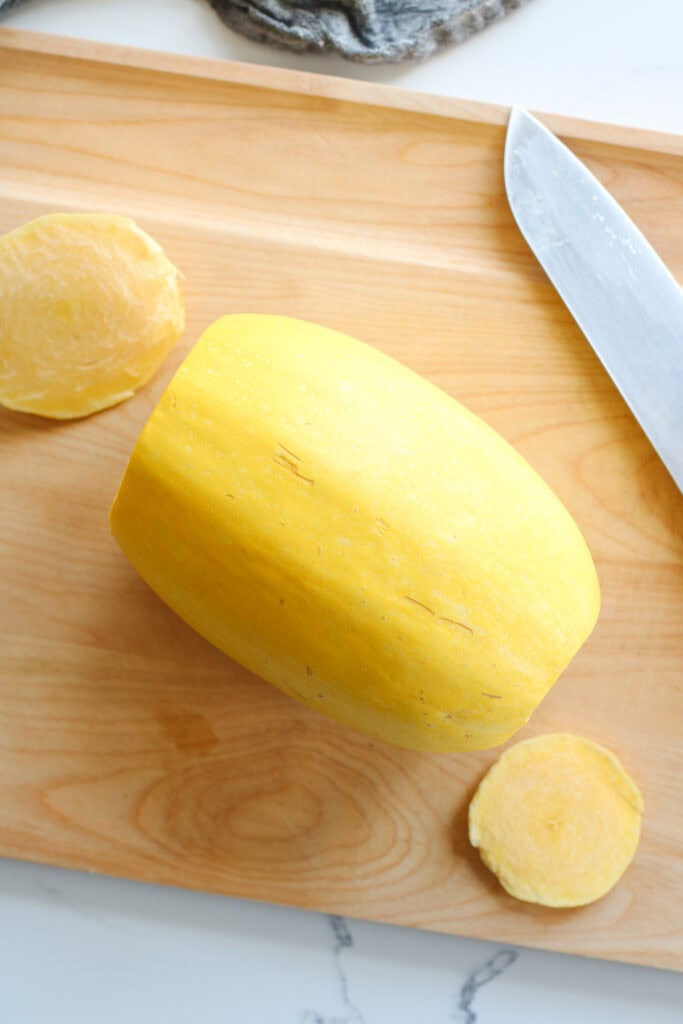
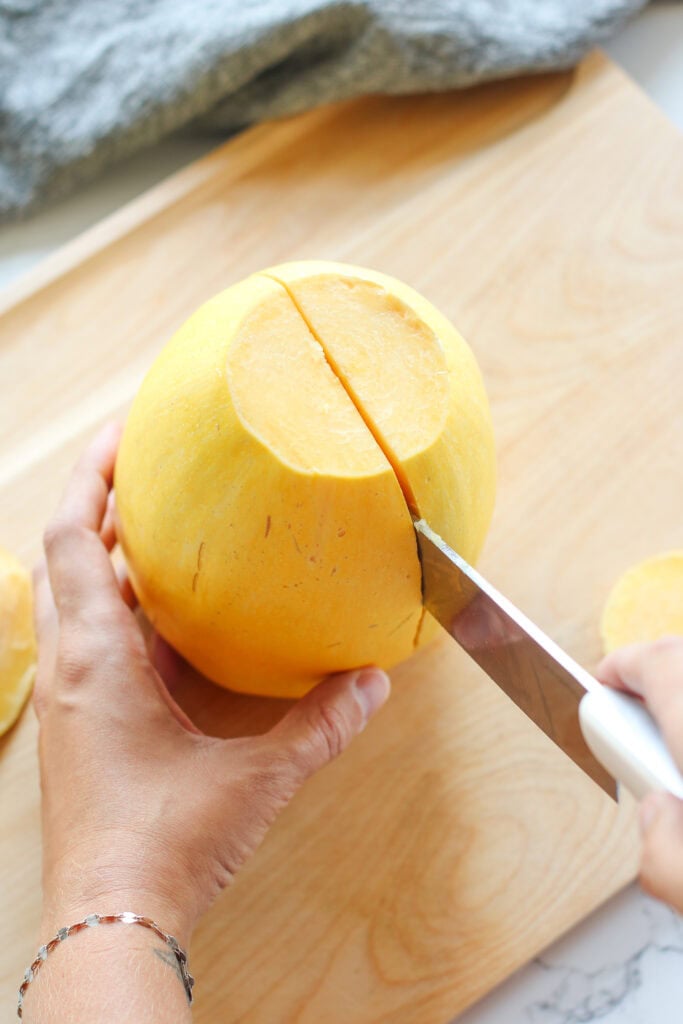
Step 3 – Scoop out the seeds and stringy insides. Use a large spoon to scoop out the insides. Sprinkle with salt then place the squash cut-side down on a large baking sheet lined with parchment paper.
Step 3 – Bake the squash. Bake in a preheated 350°F oven for 40-55 minutes or until fork tender. Baking time will vary depending on the size of the spaghetti squash you are cooking. When the squash is tender, remove the pan from the oven and allow the squash to cool slightly.
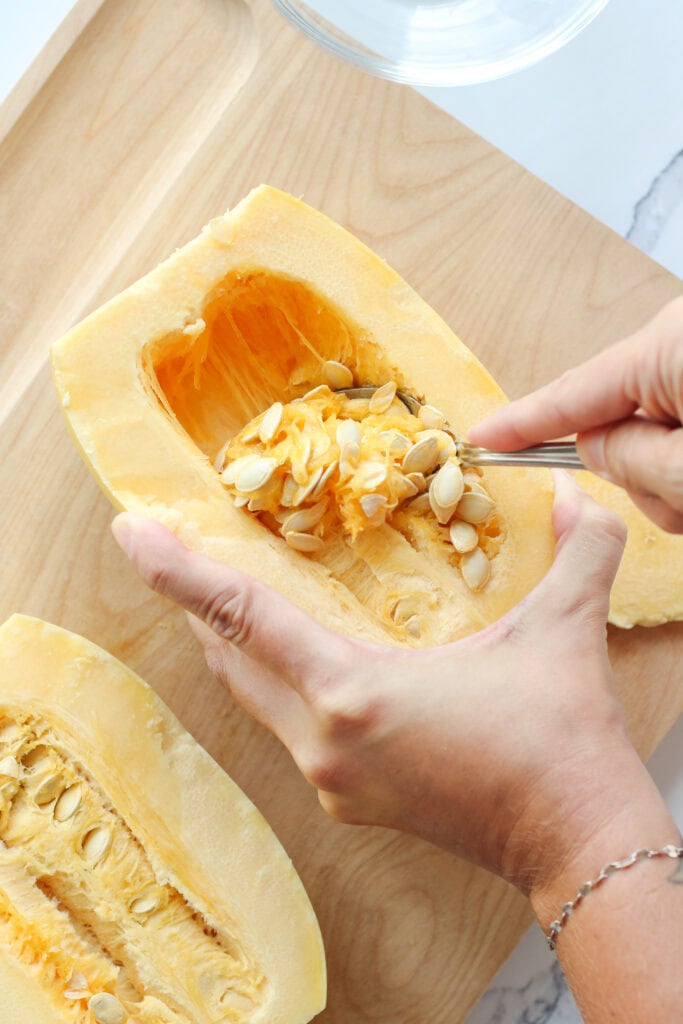

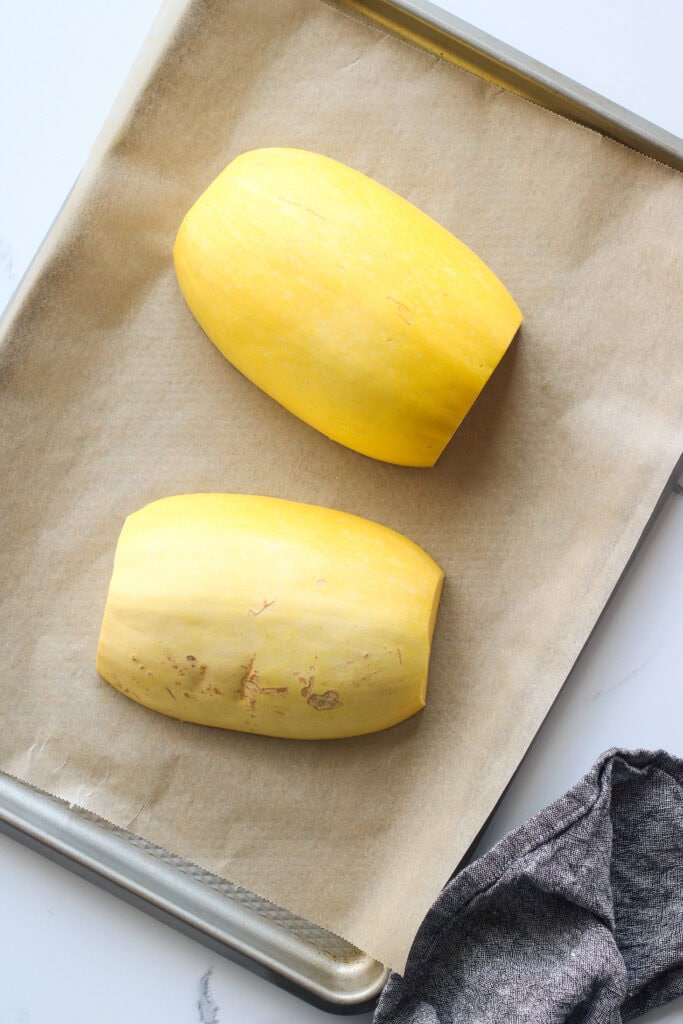
Step 4 – Release those delicious squash strands. Use a fork to scrape the inside of the squash from top to bottom to form long strands of “spaghetti”. Season with additional salt and black pepper or top with desired toppings and enjoy.
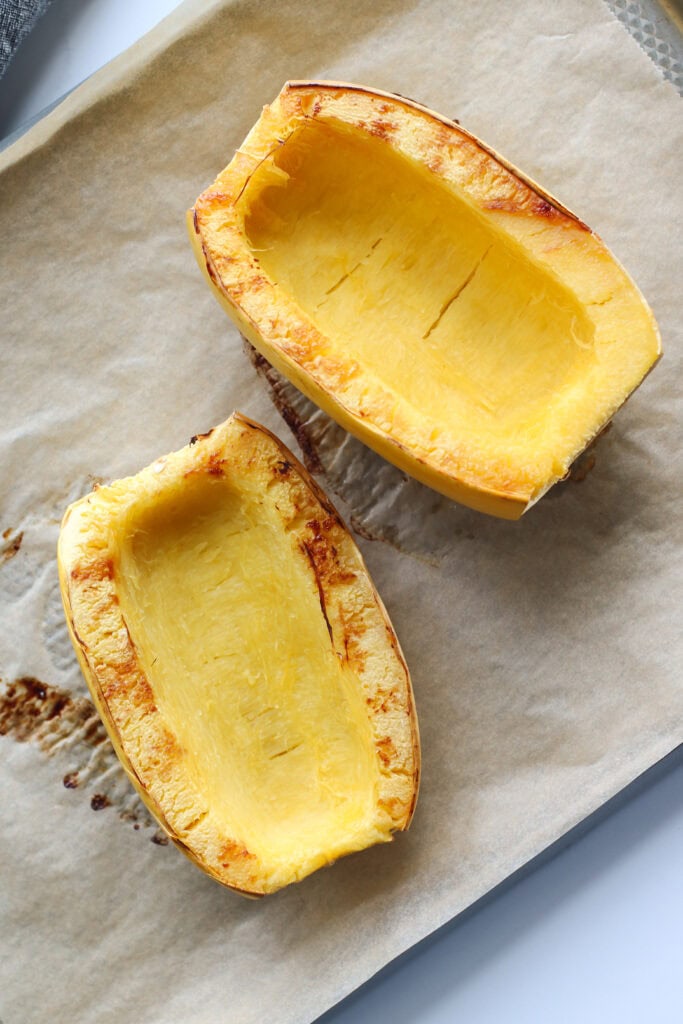
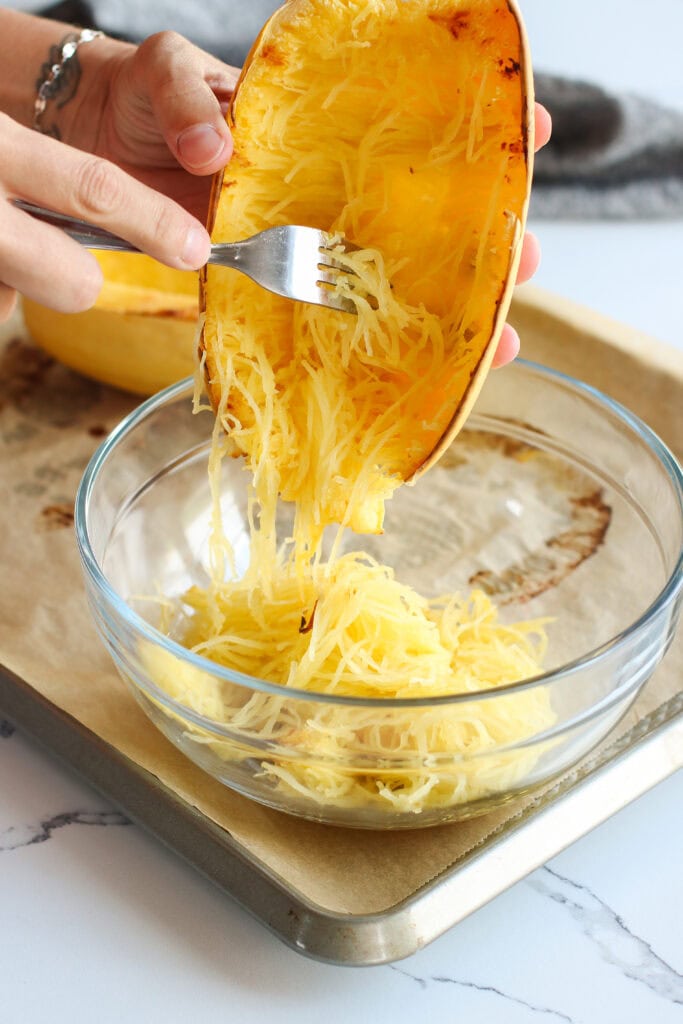
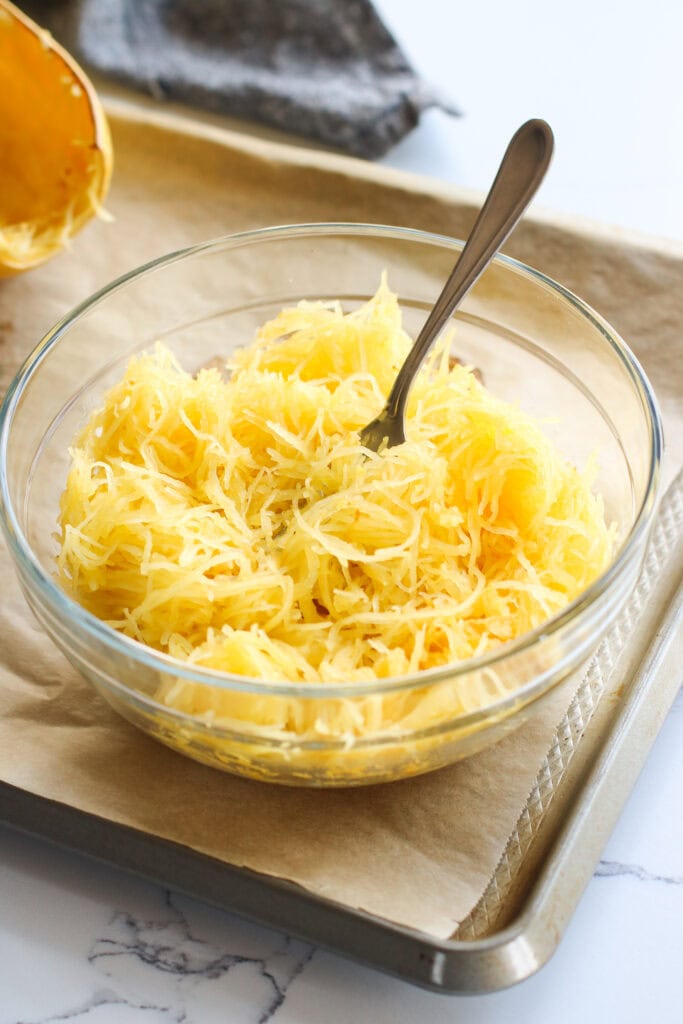
For serving size and the complete directions and ingredient amounts, scroll down to the recipe card below. All of our recipes include the nutrition analysis, listing calories (kcals), protein, carbohydrates/carb, fiber, sugar, sodium, cholesterol, and more per serving.

An Even Easier Way To Cut Squash
To make your squash easier to cut, I recommend placing the entire spaghetti squash into a preheated 350°F oven for 10 minutes or microwave it on high for 5 minutes. Allow the squash to cool slightly before cutting it.
Scoring the outside of the squash with a sharp paring knife from top to bottom on each side before placing it in the oven or microwave can also make it easier to cut, and you’ll have a guide to follow when it comes time to cut.
How To Serve
While roasted spaghetti squash is often an ingredient in other dishes, it can also be served as a side dish to complement roasted asparagus, grilled chicken or fish, Italian-style meatballs, and/or roasted veggies with a creamy dairy-free sauce.
Baked spaghetti sauce with a creamy sauce, chicken, bacon, and asparagus pairs excellently with a crisp white wine or sparkling water with a slice of lemon or lime.
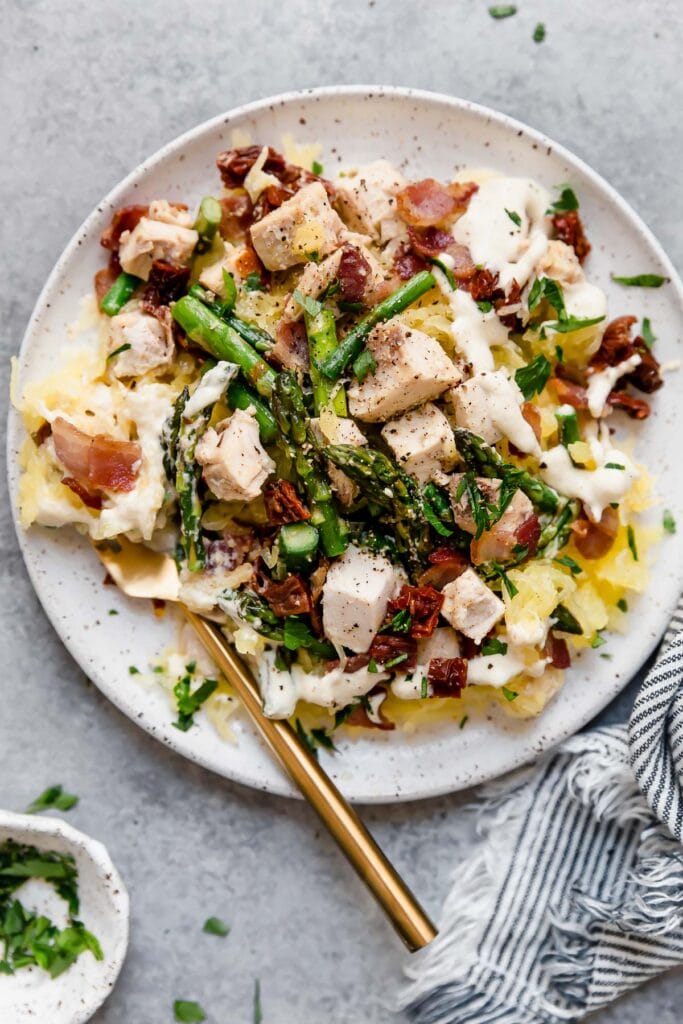

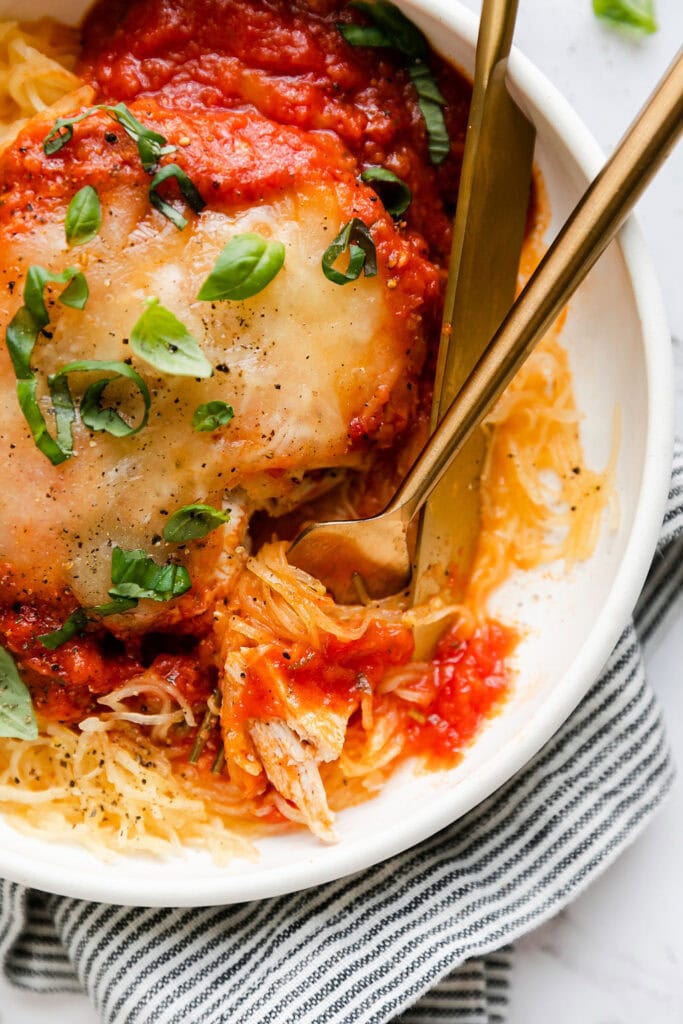
How To Store
Leftover cooked squash can be stored in an airtight container with a lid in the fridge for up to 4 days.
For longer storage, place cooled squash into zip-top freezer bags or other freezer-safe containers and freeze. Thaw partially before using (either in the fridge or by running the bag under warm water), then microwave for 1-2 minutes or until hot.
More Recipes To Try
- Buffalo Chicken-Stuffed Spaghetti Squash.
- Dairy-Free Spaghetti Squash Alfredo with Chicken
- Buffalo Chicken Bake with Spaghetti Squash
- Healthy Chicken Parmesan with Spaghetti Squash
Video: How To Cook Spaghetti Squash
Want to save this recipe?
Enter your email below & we’ll send it straight to your inbox. Plus you’ll get great new recipes from us every week!
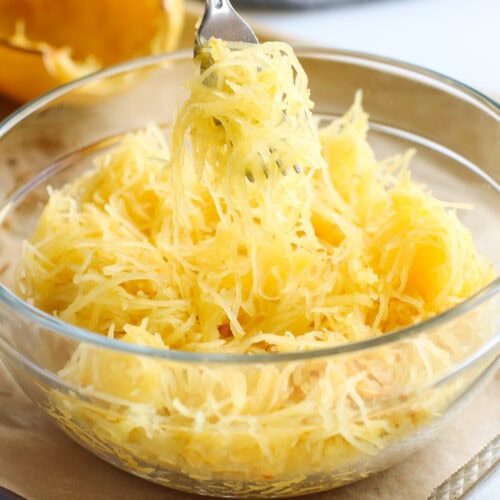
How to Cook Spaghetti Squash
Cooking spaghetti squash in the oven produces tender pasta-like strands that can be dressed up for a simple yet flavorful side dish or be used in another recipe.
Ingredients
- 1 medium spaghetti squash (about 2 ½ – 3 pounds)
- Salt and black pepper
- Parchment paper
- Large rimmed baking sheet
Instructions
- Preheat the oven to 350°F.
- Line a baking sheet with parchment paper and set aside.
- Slice both ends from the squash and discard.
- Stand the squash up on one of its cut ends and use a large chef’s knife to cut the squash in half lengthwise.
- Scoop the seeds and stringy insides out using a large spoon. Sprinkle with salt.
- Place the squash cut-side down on the baking sheet.
- Bake 40-55 minutes or until the squash is tender. Baking time will depend on the size of your squash with larger squash requiring a longer cooking time.
- Remove the baking sheet from the oven and allow the squash to cool slightly.
- Scrape the strands out using a fork. Season with salt and pepper and use as desired.
- Leftovers may be stored in an airtight container in the refrigerator for up to 4 days. For longer storage, place cooled spaghetti squash strands in a freezer-safe container with lid or plastic zip-top bag and freeze for up to 3 months.
- To reheat, thaw spaghetti squash in the fridge overnight and microwave on high for 1-2 minutes or until hot.
Last Step! Please leave a review and rating letting us know how you liked this recipe! This helps our business thrive so we can continue providing free recipes and high-quality content for you.
Notes
To make your squash easier to cut, you can place the whole spaghetti squash into a 350°F oven for 10 minutes or microwave it on high for 5 minutes. Allow the squash to cool slightly before cutting. Scoring the outside of the squash with a sharp knife from top to bottom on each side before placing it in the oven or microwave should also make it easier to cut and you’ll have a guide to follow when it comes time to cut.
Nutrition Information
- Serving Size: 1 cup
- Calories: 42
- Fat: 0g
- Sodium: 28mg
- Carbohydrate: 10g
- (Fiber: 2g
- Sugar: 4g)
- Protein: 1g
Dietary
Frequently Asked Questions
Cooking your spaghetti squash just until al dente will give it a more pasta-like texture.
A whole spaghetti squash will take about 20 minutes to cook in the microwave. To do so, place the cut spaghetti squash face down in a glass baking dish with about 1 inch of water. Microwave on high for 20 minutes or until you can easily insert a fork into the flesh.
We do not recommend that you cook your spaghetti squash whole as this may cause it to explode in your oven or microwave due to the buildup of steam inside as it is cooking. You can, however, place a whole spaghetti squash in a 350 degrees f oven for 10 minutes or microwave for 5 minutes to help soften in before cutting in half.
For ultimate success, we highly recommend reading the tips in the full blog post above. All photos and content are copyright-protected. Please do not use our photos without prior written permission. If you wish to republish a recipe, please rewrite the recipe in your own unique words. Link back to the source recipe here on The Real Food Dietitians. Thank you!
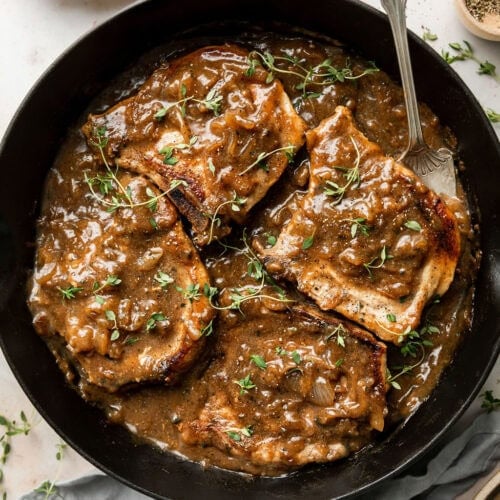

EASY PEASY
Family loves it
Thanks for the feedback! We are happy to hear you enjoyed!
So easy! Delicious.
Perfect Char!
Super easy and a good alternative to pasta. Thanks!
Definitely, Shelley! Thanks for the 5-star review!